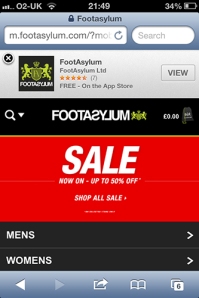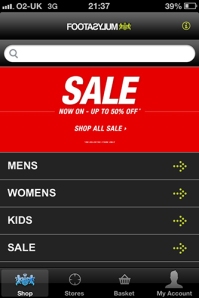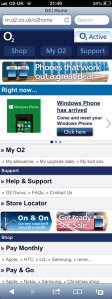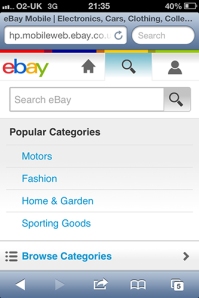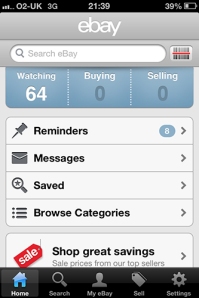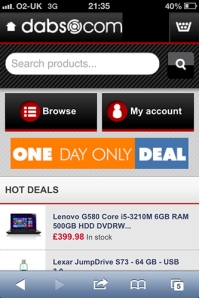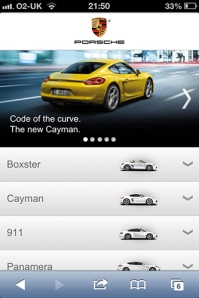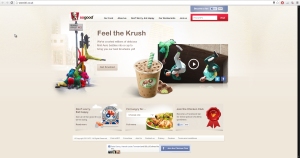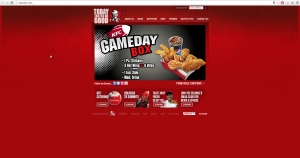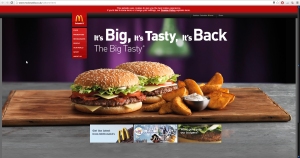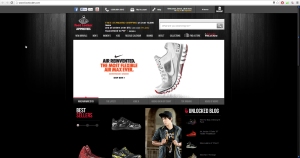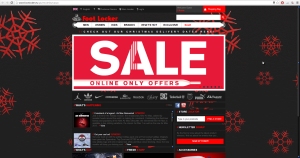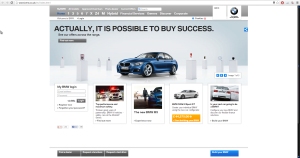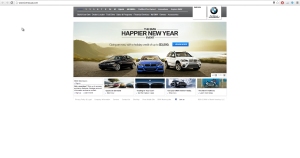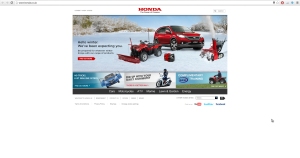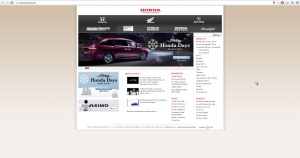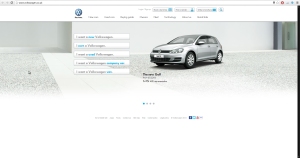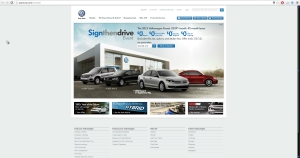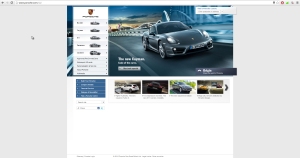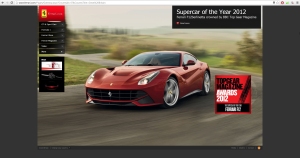Since the mobile web has taken off with the popularity of smartphones, and more recently apps, websites have been creating an app version of their website, allowing more functional gestures and extra effects/functionality to their website that just viewing the website through the web browser on the mobile would not allow. This makes it easier for the companies to connect with their customers; allowing them to notify the user when an offer is on, or certain stock is available. You can enable notifications, regularly upgrade the app for whatever reason, and quickly access your favourite places, staying logged in and the fact it will be more compatible for your specific device, rather than being made for the whole range of smartphones/tablets.
Here are some examples and comparisons with their computer version, mobile version, and app if it is available:
Displayed here is the mobile version of the facebook website, and the app for the iPhone. The difference isn’t great, they’ve just allowed more interaction with the touch screen, so that you can swipe left-right to view who’s online to chat to, and your navigation sections (friends, messages, news feed etc.). The main reason for facebook to become an app, is to that you can receive up to date notifications automatically when you are messaged/tagged/invited to something from there. With the website, you are restricted to being given notifications by email, which will only be given after each scheduled scan for new emails (hourly, daily etc), which drains battery and doesn’t always display every notification that you receive; it’s very unreliable in comparison to the app.
FootAsylum has created an app version of their website for the same reason; functionability for smartphones and notifications. You can see that the most notable difference is the search bar at the top and the footer navigation. These features work very well in an app, but possibly not so much on the mobile website as it would require additional coding which isn’t available? I’m not sure, but comparing the two, I would rather use the app, so that I can keep up to date on a website which I visit regularly.
O2’s mobile website I found to be very frustrating and difficult to browse on. They seem to have taken the creation of a “mobile” version of their website quite literally; and shrunk the width of the original down to fit the smartphones. This results in a very long page which makes you spend a lot of time scrolling to figure out what is going on and where things are that you are looking for. I recently tried to use this to try and top up my balance on my o2 sim, and found it hard to do so compared to the original version on the computer. This same version is forced on tablets; making it impossible to sign in to top up, as the feature doesn’t work. It is incredibly annoying to want to use the tablet/phone to lie down away from the computer chair to do something and having to revert back to old methods to complete a process.
eBay’s app is very different to their mobile website. There are many extra features such as scanning a barcode, a running number of watching/buying/selling at the top, and notifications when items are ending etc. The mobile website is very good; which is a tidy version of the actual website, looking very similar. The app however makes the website much easier to navigate and do what you desired, as you can search, watch an item, bid, and contact sellers/buyers easier. The notifications that you receive from apps is what generally makes them better than the mobile website, but here you can see that it also has a nicer appearance and has what you need where you need it, instead of having extras such as “popular categories”, as shown in the mobile website version.
Dab’s mobile website is a mix of o2’s and eBay’s; you get the functionality of nicer looking buttons and the like to access what you need to for buying/selling, but you are given excess data, with a long scrolling list of “hot deals” to navigate through before you do anything. This is the same as on their main website so in that sense there’s nothing to criticizing it on, but mobile websites should be cut down on the information so you can quickly process information and do what you wanted to. I feel that mobile phones are used less for internet browsing, and more for socializing When you do use the internet, it’s usually to quickly search for something or to buy; rather than spend hours browsing through a website.
Porsche’s mobile website does exactly what I expected of a website designed for smartphones. They have cutdown on the information, and made it easy for quick browsing to find what you want. The homepage has a list of each version of their car, and then a submenu of the model for each version. You are then redirected to a page which gives you written information on the chosen car and a slideshow of images. It does what was intended and you can’t fault it. It’s a shame that my theme is Porsche, I should have chosen o2 or Dabs!


